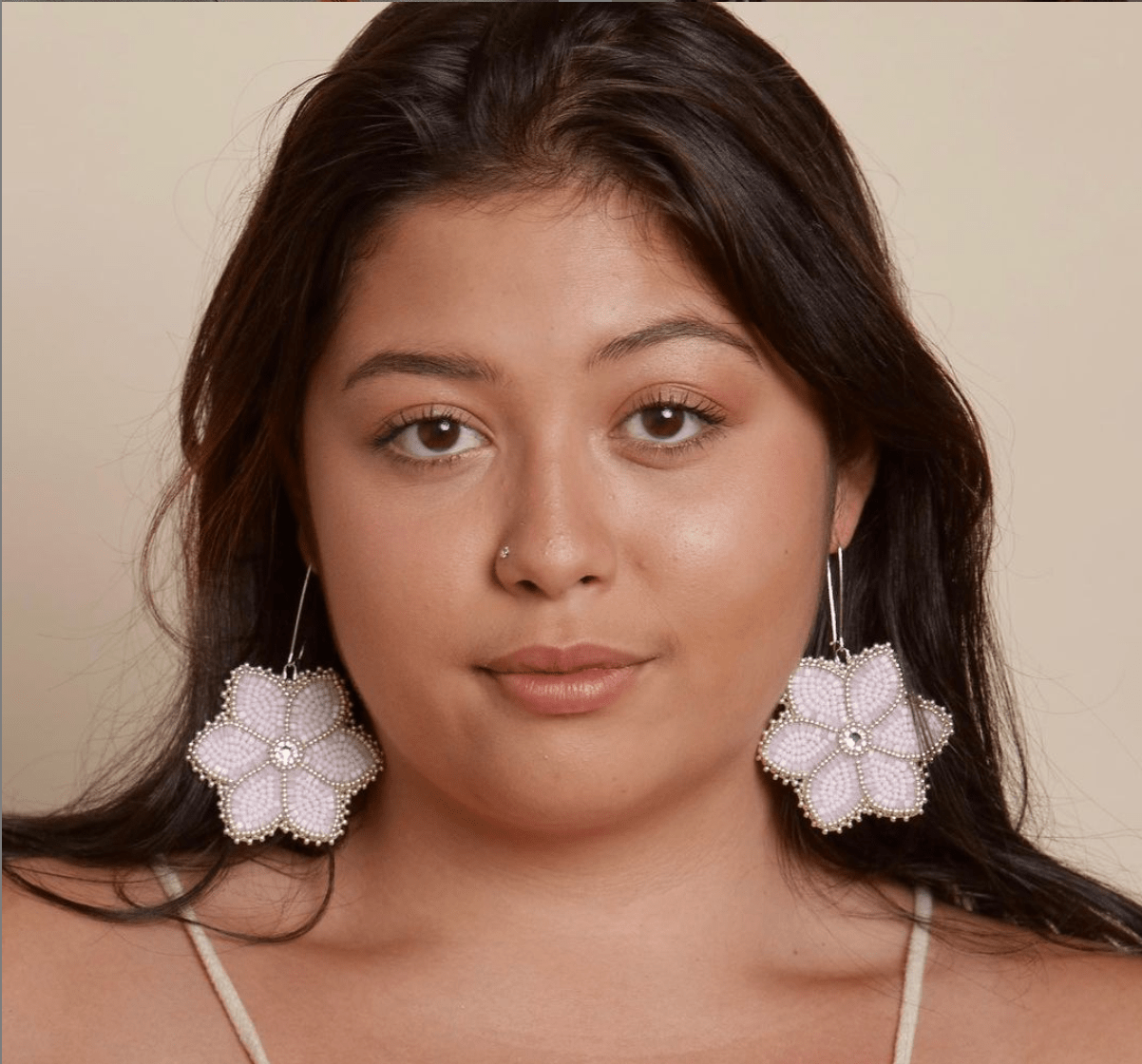By Samreen Maqsood
Edie Assinewe, a 2021 retail management graduate, is working to reclaim traditional Ojibwe beading through her family business, Assinewe Jewelry.
Assinewe collaborates with her twin sister Jacquelyn to make clay and beaded jewelry inspired by traditional Ojibwe designs. Through this, they hope to represent traditional language and teachings in their pieces.
According to Assinewe, joining Ryerson’s retail management bachelor of commerce program in 2016 was a perfect choice as it allowed her to combine her love for fashion and business. She said her time at school was “really helpful in getting to work toward building a brand and business.”
In August 2020, Assinewe and her sister started designing and making jewelry while she took one final fall semester of online school.
“I was able to work on making products while I was listening to courses, so I felt it really easy to balance,” she said.
Assinewe combined her beading skills with her sister’s clay working skills to make earrings out of these two materials. She learned how to bead in 2018 from local community members in Toronto, while her sister learned how to create clay pieces through online tutorials.
“We wanted to really focus on bringing the community together”
Assinewe and her sister are members of the Sagamok Anishnawbek First Nation. On her journey of learning how to do beadwork, she took an interest in learning the history behind traditional Ojibwe beadwork.
“A lot of our products are influenced by traditional Ojibwe motifs, such as moons and flowers, which are really important in Ojibwe culture,” she said.
According to an article by CBC, at least 8,000 years before settlers came to Canada, Indigenous communities were using beading practices for trade.
Assinewe said there are technical ways to do beadwork, “an Ojibwe way.” Different beading styles include lazy or lane stitch, a way to cover a large amount of surface quickly; loom beading, using a loom to weave and bead; and brick stitch, a method most traditionally used for earrings.
According to a 2019 article by Vogue, pre-colonization, Indigenous Peoples also adorned themselves with versions of their own beading.
The beadwork pieces featured are named in Anishinaabemowin, the Ojibwe language. For example, the ‘Manidoo’ beaded floral earrings on their website means “Spirit.” The ‘Medicine Stud’ series of earrings are infused with sacred medicines and named in Anishinaabemowin. The ‘Wiingashk’ stud earrings translates to “sweet grass.”
“We wanted to infuse traditional knowledge, cultural resurgence and language into everything we do”
“Whenever people make the order, I just make them,” explained Assinewe. “We always have them done within 14 days after an order is placed.”
Assinewe said starting a business in the middle of the pandemic was no easy feat. The biggest challenge she faced was not being able to go into stores to see the materials, which forced her to order everything online.
“It was especially hard for the beading products, because colours online can look different than in person. So, if something didn’t work out, there wasn’t anything we could really do about it,” she said.
However, their number one priority was to make their products accessible to people with lower incomes, according to Assinewe. This is why she also introduced the polymer clay line, as they are less expensive to buy than the beads. Many of these products are showcased on their growing Instagram page.
“We wanted to really focus on bringing the community together. That’s kind of prevailing in our social media strategy, where we share a lot of photos from our customers and from the community,” she said.
When thinking about their business and deciding what was important for it, Assinewe said they took several factors into account.
“We wanted to infuse traditional knowledge, cultural resurgence and language into everything that we do.”










Leave a Reply